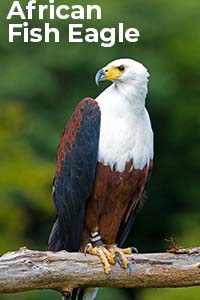Updated: Dec 12, 2021
By McKenna Schaffer and Kristin Dean, The Raptor Center
The Raptor Center is home to many species of birds of prey. These mighty predators connect our visitors to the natural world and inspire them to want to make a difference. All of our avian ambassadors are unique individuals, and our visitors connect to different birds for different reasons. Having a wide variety of species increases the chance that someone will connect with at least one of our birds and spark an interest they maybe did not have when they first walked through our doors.
We are always looking for opportunities to increase our bird diversity at the Raptor Center so we can highlight birds from all over the world. Therefore, we are thrilled to welcome two new birds to the flock - an Andean Condor and an African Fish Eagle! Both birds were hatched in the United States and raised for education with the goal of spreading global conservation awareness. We are ready to see how these new ambassador birds settle in and start connecting the public to this conservation mission.
Can’t wait to learn more about these two new birds? Neither can we! Here are some fun facts we have learned so far about each species:
Andean Condors are considered the largest raptor in the world! Native to the western part of South America, Andean Condors have a 10-foot wingspan and weigh between 20 and 30 pounds!
African Fish Eagles, as their name suggests, are found all over Africa. They are the national bird of Zambia, Zimbabwe, and South Sudan. Their call is very distinctive, and we hope that once our new eagle settles in, visitors will hear it on the Raptor Trail.
The Raptor Center is a “birds first” facility, which means that even though our raptor experience is designed to inspire humans, we put our birds’ interests first by providing best-in-class care for our avian ambassadors.Our expert Bird Care team manages their nutrition, training, enclosures, enrichment and overall quality of life with the utmost care.



















